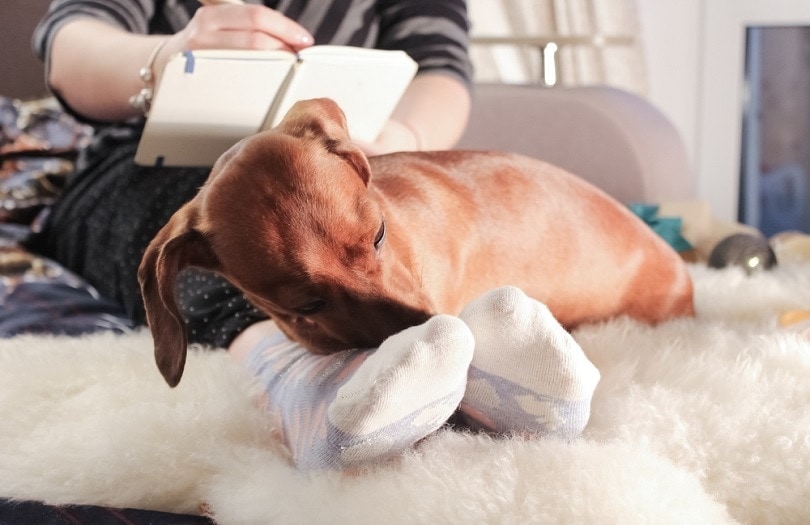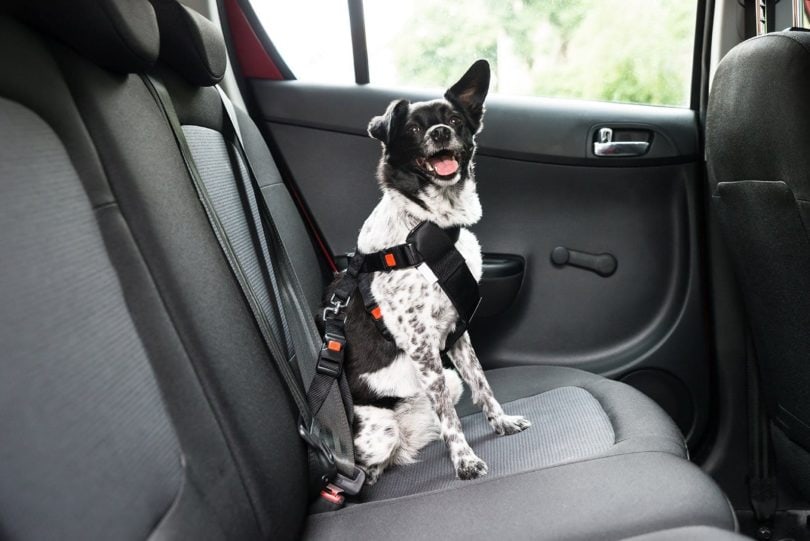How to Become a Dog Breeder: 10 Steps for Healthy Puppies
Updated on

If you love dogs, you may dream about becoming a dog breeder. While anyone can technically breed dogs, dog breeders are much more than just puppy-producers. They help further their chosen breed and produce healthy, friendly puppies for the show ring and people’s homes.
There are many steps necessary to becoming a dog breeder. However, this is a fulfilling career and hobby. While there are many paths to running a successful breeding kennel, staying on the straight and narrow can ensure that the puppies you breed are healthy and fit. Here are the 10 steps to become a dog breeder.
The 10 Steps to Become a Dog Breeder:
1. Figure Out Your Overhead Costs

First and foremost, breeding dogs is a business. While everyone loves puppies, you can’t just breed dogs together and expect to make any money. You have to run it like a business. Part of this involves figuring out how much it will cost you to care for breeding dogs and their puppies.
Generally, you can start with a single female dog. You need to factor in the food cost for this dog, which will vary depending on the breed. You will have to use high-quality food so that the dame can grow high-quality puppies. Pregnant and lactating dogs also eat more food.
You will need space for your adult dog as well as her puppies. Bedding, toys, vet visits, and other equipment will also be required. All of these things can add up. You will likely need to train your dog as well, so factor in how much obedience classes will cost.
Once you have a number, you need to figure out how you will pay for all of it. You should also have money put back for emergency vet visits and similar emergencies.
2. Research Your Chosen Breed
Many people approach dog breeding with a breed already in mind. However, if you don’t know what breed you want to work with, now is the time to make that decision.
Then, you need to research your chosen dog breed. Look at the breed standard. Truthfully, any good breeder should have the standard memorized. Look at local breeders in your area, if there are any, and consider what they’re selling their puppies for.
You will also need to find a breeder to supply you with your first dog. Sometimes, transportation costs will be required. You will need the best of the best. Often, you need to travel quite a way to get it.
3. Research Your State’s Laws

Many states have laws governing dog breeders. This is to ensure that dogs are being treated properly. Most times, these laws are not difficult to follow. Sometimes, you may need to have a license whenever you reach a certain threshold. Other times, the state does not care unless you’ve been found guilty of animal cruelty.
Licenses often cost money, though not much compared to your other expenses.
Often, laws do not pertain to hunting dogs. If you’re breeding a hunting breed and hunt with them, you will likely not need to comply with any laws.
4. Purchase Your First Female Canine
Once you’ve done all the proper research, it is time to choose your first female dog. You should adopt from a registered AKC breeder and ensure that the breeder knows you’re purchasing the dog for breeding. Often, breeding-quality dogs are more expensive than pet-quality dogs. You should plan on spending quite a bit.
Sometimes, breeders may be able to help you get started with breeding as a whole. Many can become mentors.
5. Find a Quality Sire

At this point, you do not need to own a male dog. However, you will need to choose a dog as a stud for your female. Preferably, the stud you choose should already have litters that have been produced. The puppies should be high-quality, as this shows the dog as good genetics.
Select a stud that has a good performance in the show ring and has an excellent pedigree.
Once you have chosen a quality dog, it is time to do the breeding. You will need to wait for your female to go in heat, which is the only period where she can get pregnant.
6. Monitor Your Dame’s Pregnancy
Once your dog is pregnant, you will need to monitor her pregnancy closely. A few veterinary visits are likely in order, as prenatal care is essential to ensure the pregnancy goes smoothly.
Dogs usually do not show they are pregnant until around month three. They gain weight very quickly during the second month of pregnancy, so you will know they are pregnant by the end, if not earlier. Vet visits can confirm pregnancy earlier.
It is essential to provide your dog with enough food during pregnancy, as her nutrition needs will increase. You should also switch her back to a puppy formula, as not all adult formulas will provide her with the nutrients she needs.
7. Prepare for the Birthing

As the third month heads towards an end, you should prepare a space for your female to give birth. There are whelping boxes specifically for this purpose, though many breeders make their own or DIY a location at home.
This space should be quiet and comfortable. The female should be able to go there without being disturbed by other dogs or animals. You should keep traffic in the area to a minimum, even before the birthing starts.
The actual birthing box should be lined with newspapers or a similar material. This can be changed quickly, which is helpful during the messy birthing process. You should have towels and appropriate grooming supplies handy as well.
8. Care for the New Puppies
After birth, your primary focus will turn to caring for the puppies. In the first few days, the new family will need lots of time to rest. The mother dog typically knows what she is doing and will need little help caring for the babies. You may need to help ensure all puppies are eating appropriately, however. If the litter is large, some puppies may not get enough time for nursing.
When the puppies are very young, though, you will need to begin socializing them. Puppies must be handled so that they are used to people. You should introduce them to children and other animals when they are a few weeks old, as this ensures they are prepared for their future homes.
You should also introduce them to unusual objects, loud noises, and other everyday stimuli.
9. Find the Puppies a Home

When the puppies are 8 weeks or older, you will need to find them appropriate homes. As a new breeder, most of your puppies will likely be bought as companions. You can list your puppies on the internet. We recommend being registered with the AKC and using their marketplace. Local ads and similar outlets can also be a great place to connect with potential buyers.
You should not just sell your puppies to everyone that comes knocking, however. Many breeders ask for references, down deposits, and ask potential buyers questions before selling them puppies. You should do this as well to ensure your puppies are going to happy homes.
10. Do It Again!
After you breed your female once, your next step is to repeat the process. You should only breed a single female once a year at the most. You will need to give her time to recover and regain the weight she likely lost while nursing. However, eventually, it will be time to breed your female again.
After a time, you will likely acquire new females or keep a female puppy to breed. You can also keep a male puppy and decide to sell them as a stud to other breeders.
Either way, after a few years, your business will begin to grow. Breeding dogs is just doing the steps in this article over and over again. Eventually, you get more dogs, which means more puppies. This translates into more money for your business, which means you can purchase more dogs. This cycle continues until you have an appropriate number of dogs.
If dog breeding seems too much for you, but you want a career with dogs, check out some of our other how-to guides to begin your next job:
- How to Become a Dog Groomer
- How to Become a Dog Walker
- How to Become a Search and Rescue Dog Handler
Featured Image Credit: Liliya Kulianionak, Shutterstock











